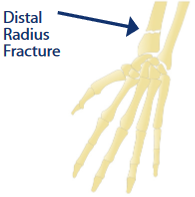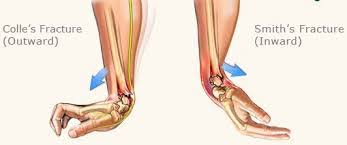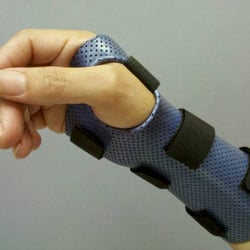nalco group
bone, muscle & joint pain physio
BOOK NOW / WHATSAPP ABOUT YOUR PAIN OR INJURY
- NOVENA 10 Sinaran Drive, Novena Medical Center #10-09, Singapore 307506
- TAMPINES 9 Tampines Grande #01-20 Singapore 528735
- SERANGOON 265 Serangoon Central Drive #04-269 Singapore 550265
Home > Blog > Hand Therapy & Customized Splinting > Finger, Hand, Wrist, Forearm & Elbow Conditions > Distal Radius Fracture Hand Therapy
Distal Radius Fracture Hand Therapy
“Working with a knowledgeable hand therapist can make the difference between success and failure in complex hand surgical cases. The therapist extends the continuum of our care, as well as functioning as coach and trainer for our patients.”
Marybeth Ezaki, MD, Past President, American Society for Surgery of the Hand
In Phoenix Rehab, our senior hand therapists are experienced licensed and dedicated therapists (physiotherapists and/or occupational therapists) who specialized ONLY in the rehabilitation, treatment and management of painful fingers, hands, wrists, forearm & elbow conditions, because of interest, passion and expertise.

The radius is one of the forearm bones that connects our elbow to the wrist.
A distal radius fracture is a break in this bone just before the wrist joint and unfortunately, it is our radius bone that is the most frequently broken bone in the arm.
A distal radius fracture is considered simple if the bone breaks in only one place...and a complex distal radius fracture occurs
- if the bone shatters into many pieces
- if any other bones break along with the radius or
- if parts of the bone move out of their normal position
What are the symptoms of a distal radius fracture?
A fractured distal radius may cause
- pain
- swelling
- bruising
- tenderness and
- in some cases, the wrist may look abnormal
Other symptoms can include numbness and tingling in the fingers, or the inability to bend or straighten the fingers or thumb.
What causes a distal radius fracture?

A distal radius fracture is usually caused by a fall on an outstretched hand or through contact sports and physical activities.
Bones are what that make our rigid skeleton, and when a lot of force is put through them, they can break. A number of risk factors, such as low bone density or osteoporosis, may make it more likely for a distal radius fracture to occur.
What is the treatment for a distal radius fracture?
If a doctor suspects that the radius is fractured, an X-ray of the forearm and wrist will be taken.
Once a doctor determines there is a fracture of the distal radius, a decision will be made regarding how to treat the break. Which option a doctor picks will depend on whether the break is simple or complex. Some fractures will require simple immobilization in a cast. Others may require surgery to realign the bone.
Typically, no surgery if
- distal radial / wrist fracture is simple and stable and/or
- patient prefer conservative
Typically, surgery if
- distal radial / wrist fracture is complex and/or
- distal radial / wrist fracture is unstable and/or
- patient prefer surgery
What complicates matters only is only when the fracture is complex/unstable but patient prefer not to have surgery, despite medical advice.
What can a hand therapist do for me?
Our senior hand therapist works directly with a doctor to discuss how the bone is healing and when to begin moving the wrist.
We will educate and instruct the patient on how to reduce swelling and pain, as well as give helpful tips on how to return to daily activities while the fracture heals.

For protection, we might also make an customized wrist splint to help support the wrist.
When a doctor and our senior hand therapists decide it is safe, exercises that will help move and strengthen the fingers, wrist and forearm will be started. Our #1 goal will be to restore normal 100% function and use of the hand and arm.
Patients may also receive the following hand therapy treatment modalities:
- cold therapy
- heat therapy
- moist heat paraffin wax therapy
- manual therapy
- joint mobilization
- ultrasound therapy
- etc
